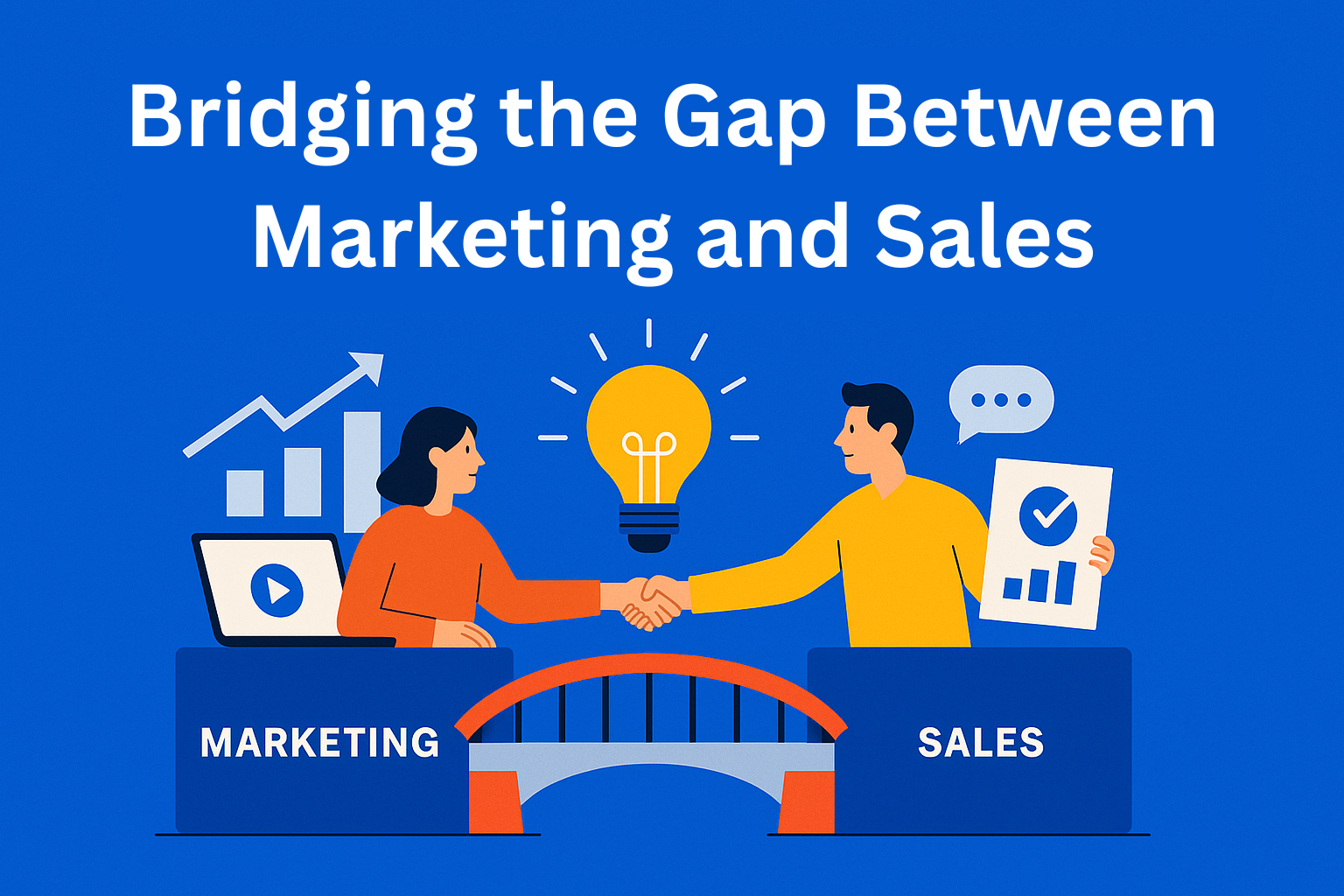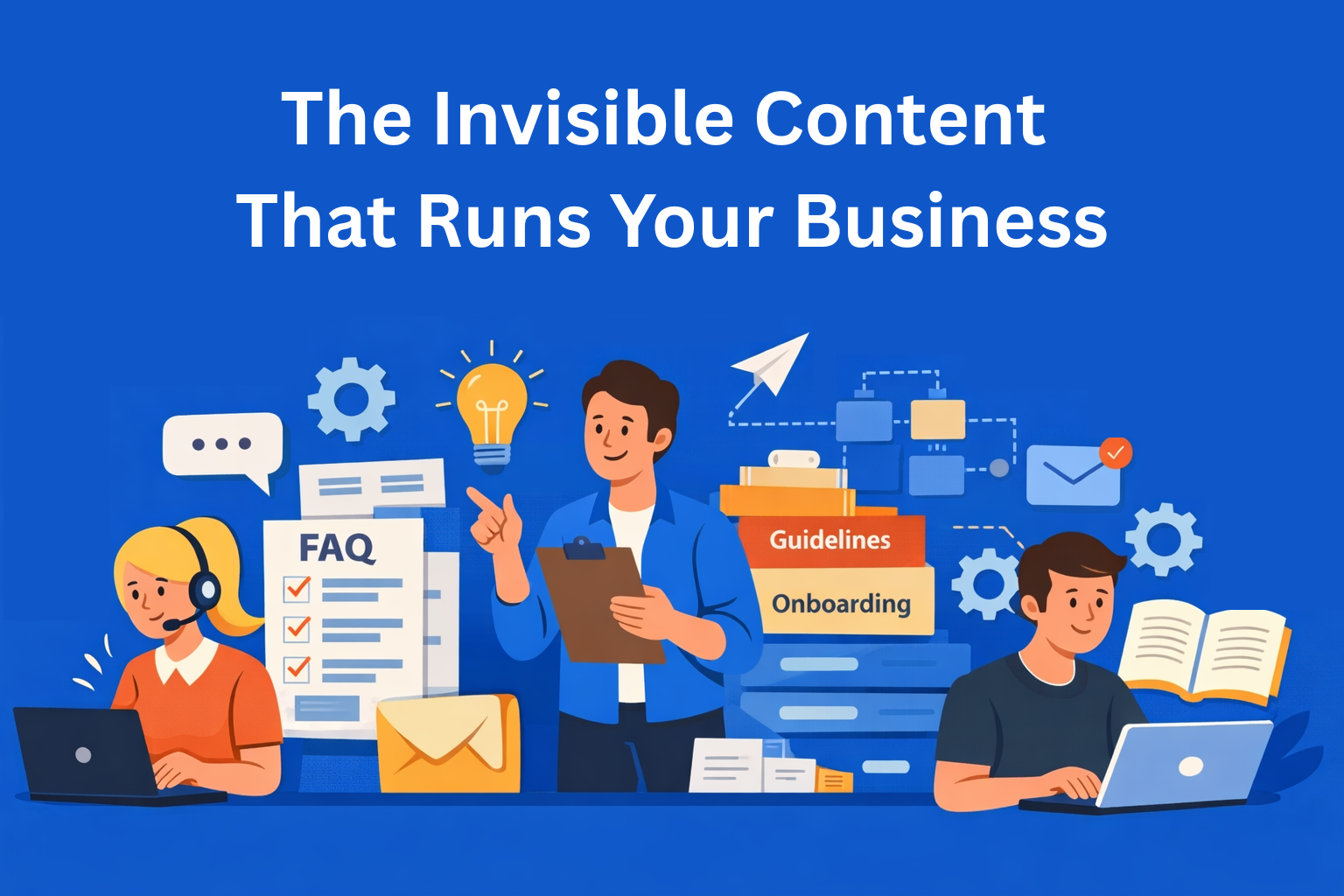Bridging the Gap Between Marketing and Sales Through Content
Marketing and sales shouldn’t feel like two teams rowing in opposite directions. This blog explores how strategic, buyer-focused content can align both sides - turning awareness into action and leads into loyal customers.

It’s one of the oldest divides in business: marketing and sales.
Marketing says, “We’re driving traffic and generating leads!”
Sales replies, “Yeah, but they’re not the right leads.”
Meanwhile, leadership sits in the middle, wondering why both sides sound like rivals instead of teammates.
The truth? Marketing and sales are two halves of the same customer journey - but too often, they act like separate planets orbiting the same sun. And that gap between them? That’s where deals get lost, leads go cold, and customers start to slip through the cracks.
The solution isn’t another meeting or a new “alignment strategy.” It’s content - built strategically, shared intentionally, and designed to bridge the gap between awareness and action.
Let’s talk about how to make that happen.
Key Takeaways
- Marketing and sales often operate in silos - Different goals, timelines, and languages cause misalignment, leading to missed opportunities and cold leads.
- Content bridges the gap - Strategic, buyer-focused content connects awareness to action, aligning both teams around the customer journey.
- A shared content library keeps everyone aligned - Centralizing assets, messaging, and updates ensures both teams use consistent and up-to-date materials.
- Feedback and data drive real alignment - Building feedback loops and tracking shared metrics like content-influenced conversions strengthens collaboration and performance.
- Collaboration tools make it effortless - Platforms like EasyContent simplify teamwork, enabling real-time communication and unified workflows that keep marketing and sales truly connected.
Why the Disconnect Happens
Before we fix it, let’s call it out. Marketing and sales usually drift apart for three reasons:
- Different goals: Marketing focuses on reach, awareness, and engagement metrics. Sales focuses on conversions, relationships, and revenue.
- Different timelines: Marketing plays the long game - nurturing audiences over time. Sales lives in the now - quarterly targets and monthly quotas.
- Different tools and language: Marketers talk about personas, funnels, and brand tone. Sales talks about objections, ROI, and closing tactics.
So when the two teams don’t share a clear view of the customer journey, the content meant to connect them ends up serving one side more than the other.
That’s where strategic content comes in - not “marketing content” or “sales collateral,” but something that speaks both languages fluently.
Step 1: Create Content That Aligns With the Buyer Journey
Here’s the golden rule: your content shouldn’t just attract attention - it should drive action.
That means building a content strategy that supports the entire buyer journey, not just the top of the funnel.
Marketing’s job: spark interest
Blogs, videos, guides, and newsletters are great for attracting attention. But instead of broad, generic topics (“Top 10 Marketing Trends for 2025”), focus on subjects that connect to the real problems your sales team hears every day.
Example: “How to Convince Your Boss It’s Time to Upgrade Your CMS.”
Now, that’s a piece of marketing content that gives sales an open door.
Sales’ job: close with confidence
Once marketing gets the conversation started, sales should be able to pick up the thread - using the same tone, same messaging, and even linking back to those original pieces.
This kind of seamless handoff makes the buying experience feel like one coherent journey, not a game of telephone.
Step 2: Build a Shared Content Library
You know what kills collaboration? A content graveyard.
That shared drive full of half-finished decks, outdated PDFs, and mystery files.
A shared, organized content library solves this - and makes sure sales and marketing are pulling from the same playbook.
Here’s what it should include:
- Approved messaging and talking points
- Case studies and customer success stories
- Product one-pagers and solution briefs
- Sales enablement content (battle cards, objection handling sheets)
- Visuals, templates, and design assets
When marketing updates a message, sales should see it instantly. When sales closes a deal with a specific piece of content, marketing should know it worked.
That’s where tools like EasyContent help - you can store, update, and manage all these assets in one place. No more wondering, “Where’s the latest version?” Everyone’s literally on the same page.
Step 3: Create a Feedback Loop (That Actually Works)
Marketing teams often create content based on assumptions - what they think sales needs. Meanwhile, sales keeps valuable insights buried in call notes or email threads.
Bridging that gap starts with communication that flows both ways.
Try this:
- Have sales share common customer objections, so marketing can create content to address them.
- Let marketing test which assets actually influence deals - and report that back.
- Schedule short, focused syncs (not two-hour marathons) where both teams share wins and lessons learned.
Even better, build feedback into your workflow. With a platform like EasyContent, marketing can tag sales team members for feedback directly inside content drafts. No Slack ping. No email thread. No confusion.
Step 4: Use Data to Align Around What Works
It’s hard to argue when the data speaks for itself.
Both teams should look at metrics that reflect shared goals - not vanity stats. Instead of just “page views” or “calls made,” track things like:
- Content-influenced conversions (how often a piece of content appears in closed-won opportunities)
- Engagement-to-conversion time (how long it takes for leads to move from reading to buying)
- Sales adoption rates (how often sales actually uses marketing content)
This kind of shared measurement builds accountability and reduces friction. You’re not arguing about opinions - you’re refining based on proof.
Step 5: Let Content Do the Talking
The best bridge between marketing and sales isn’t a shared meeting calendar - it’s great storytelling.
Think of your content as a conversation starter that both teams can use.
A blog that addresses industry pain points gives marketing material to promote and gives sales a talking point for outreach.
For example:
- A guide about “The True Cost of Inefficient Workflows” helps marketing attract the right audience - and gives sales a narrative about ROI.
- A case study that highlights a customer win gives marketing social proof - and gives sales an asset to close deals.
When both sides use content as a shared language, customers stop feeling the handoff between departments. Instead, they experience one clear, cohesive brand voice.
Step 6: Make Collaboration Easy (Because It Should Be)
Alignment doesn’t have to mean complexity.
Tools like EasyContent simplify collaboration by letting marketing and sales teams work inside the same system - sharing notes, tracking approvals, and updating messaging in real time. No tool-hopping. No duplicated effort.
It’s a small shift with a big payoff: when communication flows smoothly, everyone spends less time “syncing” and more time selling.
Conclusion
When marketing and sales finally work together, content stops being a deliverable and becomes a growth engine.
Alignment isn’t just about better communication - it’s about creating content that attracts, informs, and converts, all while speaking to the same goals.
With the right workflows, clear documentation, and a shared platform like EasyContent, the “gap” between marketing and sales becomes a bridge - strong, seamless, and built to drive results.
Because when these two teams stop pointing fingers and start pointing in the same direction, the entire business moves forward faster.






